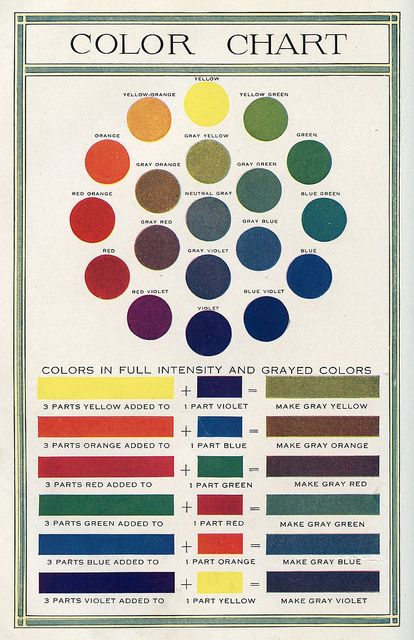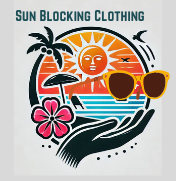
What is the Best Color for Sun Protection? Is there an optimal sun protection color?
Do you want to know how to choose the right color?
As our knowledge about skincare and sun protection continues to grow, we can adapt our habits and make informed decisions.
Sometimes, however, we find ourselves questioning our choices and lacking confidence. I can certainly relate!
Looking at my sun-damaged skin in the mirror, I feel the urgency to change my approach and prioritize sun protection.
Is Black the Way to Go?
The fundamentals of sunscreen and sun-blocking clothing are, well, basic.
It’s important to cover our skin and wear sunscreen.
In my part of central Texas, we traditionally opt for darker colors in winter.
We knew those colors were usually warmer, if all things were equal.
Then, we reach for lighter colors in the warmer months to help us feel cooler.
But, here’s a basic fact: black absorbs the most UV rays. In the summertime, we want to absorb those dangerous rays and block them from reaching our skin. Seems pretty simple, right?
What is the best color for sun protection? Which color will keep your skin safer from sunburn? What color is best for our family?
As we learn more about the importance of taking care of our skin and protecting ourselves from sunburn what do we need to do?
One thing that has become apparent is that we are human, have questions, and don’t always follow through. For some reason, my self-confidence has wilted when making decisions about which to purchase.
All I have to do is look in the mirror and see my skin that has sun damage to know that I need to change. That change needs to come now in how I protect myself from the sun.
Is Black My Best Choice?
The basics of sunscreen and sunblocking clothes are just that, basics.
We need to cover our skin, and wear sunscreen.
In my part of the world, we have traditionally worn darker colors in the winter, to keep us warmer.
The lighter colors come out as it gets warmer and we need to feel cooler.
However, black is the color that absorbs the most UV rays.
We want to absorb those dangerous sun rays in the summer. Block them from our skin. Again, basic information, right?
White reflects more heat so making it cooler to wear in the warmer months. You want to be comfortable and protected. White will reflect the warmer Sun rays, but what about the UV rays that damage our skin?
Comfort or Protection?
So, don’t comfort and protection go hand in hand?
Remember, the white fabric can still reflect the sun’s UV rays onto your skin. A white shirt reflects those rays to your face from below a sun hat’s brim.
So what are we supposed to do?
The key to protecting your skin starts with the tightness of the fabric weave. A tightly woven fabric will keep the sun off your skin in the areas covered in that shirt.
This is why the white shirt can provide effective protection against direct sun exposure.
But keep in mind that reflection can cause additional skin damage, which is where sunscreen comes into play.
Considering these factors, what color is best for sun protection?
If the weave of the fabric is tight enough, there can be effective protection from direct sun.
But the white fabric can reflect the sun’s UV rays onto your skin.
Reflection causes another layer of skin damage and sunscreen can help with this.
So keeping these facts in mind, what is the best color for me for protection from the sun?
It would seem that the color question is second after the tightness of the weave of the fabric for the clothing.
What About Blue
Testing brings out the results of another color that may offer the best color choices for summertime wear.
Blue seems to be that color that is a middle-of-the-road choice. When color is about the shade of denim it can be an excellent choice.
Have you paid attention to the weave of denim?
It is a combination of darker blue and white thread woven very tightly. The tight weave makes it strong and wears for a long time. That is why it has been a favorite for jeans.
This weave also gives you the combination you need for warm and reflection both.
Extensive testing has revealed another colorDenim Blue might offer the best of both worlds for sun-safe fabric.
However, the tightness of the weave stops air circulation when you have a denim shirt on.
Responsible Choices
In a hot dry climate like the desert west and during times when we are having low humidity, I will be comfortable in denim shirts to protect me from the UV rays and reduce sun damage.
Let’s face it, when the weather is extremely warm, being out in the heat is not in my favor, regardless of the color. There are times to just wait till later in the day, or get out earlier in the morning.
However, again in the part of central Texas where I live, we are usually faced with more humid conditions. 60 and 70 % humidity makes denim shirts a sweatshirt even if temperatures are milder.
When our temperature rises to the late spring and summer normals of 90* plus, you are not comfortable at all.
This kind of weather is what makes us bare our skin to the dangers of sun exposure.
Wearing a shirt that is going to make you sweat does not make getting out fun.
Basic Color Information
When selecting colors for sun-protective clothing, it’s important to bear a few key principles in mind.
Darker colors are generally better at blocking sun rays.
So opting for deep orange over pale orange or yellow, or red over pink, will provide improved absorption and reduce reflection.
However, keep in mind that darker colors tend to be hotter to wear.
However, to achieve a balance between lightweight comfort and sun protection, you may want to consider specially treated fabrics.
Knowing the various special finishes and weaves that are now available to us, I will certainly keep this black-white-blue information in mind.
As modern manufacturers are improving the choices we have, we can be less dependent on color. When making choices for my sun protection clothing, the basics do matter, but so do personal preferences.
Will other colors help?
Is Color Important at All?
When choosing colors for our sun-protective clothing to help us stay safe in the sun, here are other basics to remember.
Can you wear plain clothes from what you already own? Sure you can. Make good choices to protect your skin.
When you are wanting to block the sun rays from your skin, darker colors, and long sleeve. is always better.
Deep orange is better than pale orange or yellow. Red will absorb more than pink.
Remember, absorbing UV rays is important as it leaves less to reflect. The other thing is that these deeper colors will be hotter to wear.
I find blue an easy color for me to work with. But I want comfort as well as the best of protective qualities.
So I will need a specially treated fabric to be able to have lightweight and sun protection.
My Personal Sun Defense
Of course, I won’t forget my wide-brimmed hat, sunglasses, and sunscreen, which have become essential parts of my routine. I have seen a difference in my skin with using sunscreen every morning.
While my denim shirts may lack specialized sun-blocking treatment, their color, and tight weave will still do the trick. They also generate a fair amount of heat!
If they were less tailored and had flared sleeves, there might be some airflow to alleviate the sweltering weather.
My denim shirts are essentially basic button-up shirts, which can be quite warm. Their sun protection benefits will help but on hot, humid, sunny days?
I get in out of the bright sun. Seeking shade or taking refuge indoors to escape the heat.
Nevertheless, I take solace in knowing that they will help protect my skin during winter when high UV days are a common occurrence.
By combining my wide-brimmed hat, sunglasses, sunscreen, and specially treated fabrics, I feel confident in my efforts to safeguard my skin and combat the signs of aging.
My shirt may not have been treated specially for sun blocking protection but the color and tight weave will do the trick.
The other trick this shirt will provide is heat! If it were less tailored and had flared sleeves there might be some airflow for hot weather.
The very factors I want in my shirts for cooler weather make them scooted to the back of the summertime closet.
However, I am encouraged to know that they will help protect my skin in the winter when we have very high UV days.

Sami’s take on “What Is The Best Color For Sun Protection?”
Realizing that for me and what I need to protect my skin, I have a combination of items made of special finish fabrics.
My overall aim is to protect my skin and slow the aging that is occurring to my skin. How Is Your Sun Blocking IQ?
When considering my purchases, I will look for sun protection labels. Those labels will receive a careful reading so I understand how to care for the garment. Sun protection garments are more expensive. I need to pay attention to my purchases.
When that beautiful white shirt seems to be calling my name, I may need to ignore it and go for a color with some hue to help absorb the UV rays.
Recognizing the importance of protecting my skin and slowing down the aging process, I aim to utilize a combination of items made from specially treated fabrics.
What are you thinking about what you need?
Thank you,
Sami
